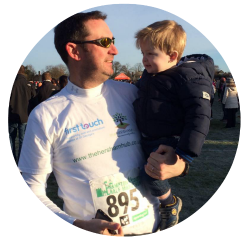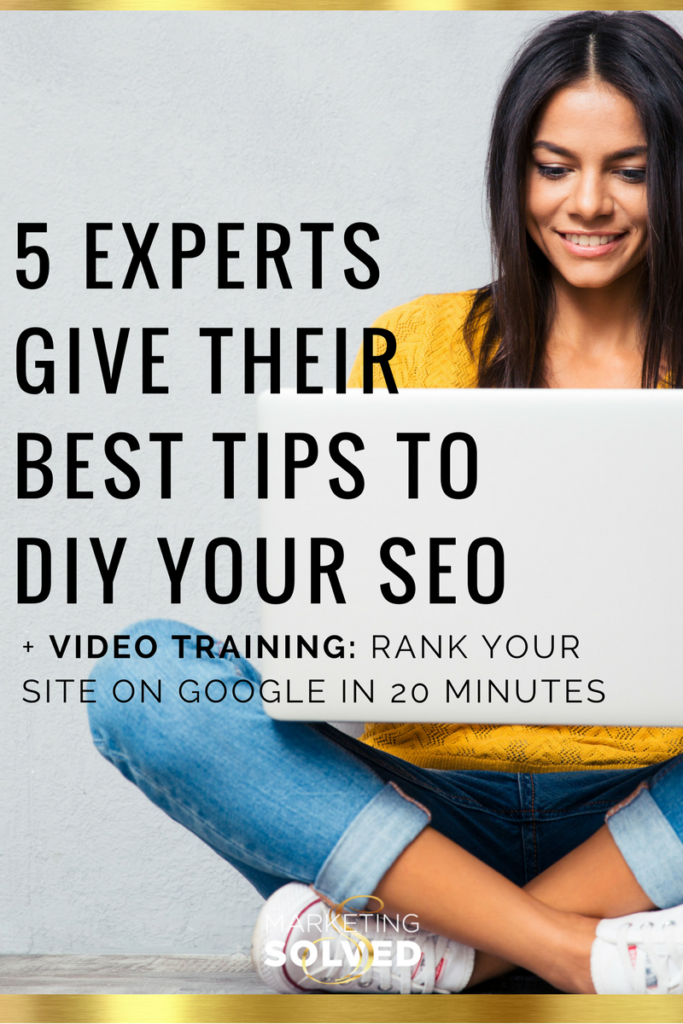5 Experts Give Their Best Tips to DIY Your SEO
Search Engine Optimization has long been one of the favored online marketing techniques. The better your search results, the more clicks to your website. The more clicks, the more appointments, phone calls, subscribers, leads and sales. It’s no secret that the top of the search results is where you want to be, with less than 6% of searchers ever hitting page 2 of the search results – if you’re not one of the first few results, your chances of getting clicks and conversions diminishes greatly.
So where do you start?
These 5 SEO experts give us their best tips on how to DIY SEO:
 Nigel McHugh, Surrey Digital
Nigel McHugh, Surrey Digital
Beware the Google Sandbox. If you have a new website (less than 6 months old) you are going to find yourself in the so called Google Sandbox. It’s a bit like website probation where you will not rank in your organically deserved place in the SERPs for between 3 and 6 months – this is not a fixed period and will depend on what industry and keywords you are targeting. For example, if you are an online gambling or PPI claims website you can expect strict scrutiny before you are allowed to play in the real search rankings…. The thinking behind it is to stop spam sites from rising quickly, getting banned, and repeating the process. If you are planning a new website get it online ASAP, even before it has started being built, put a ‘Coming Soon’ page up, get it indexed and then start building it (I would also put an Opt-In on the landing page). The key during your sandbox period is to be consistent with your content quality and backlink profile. Remember, Google isn’t trying to make it difficult for legitimate businesses, it’s mission statement is: “to organize the world’s information and make it universally accessible and useful.” That last word is key, ‘useful’, Google wants to serve the most accurate and relevant content so during your ‘probation’ period keep pushing out great content it will speed up the process and get you ranked much faster! And stay patient, you’ll get there! Catch 20 more tips from Nigel, here.
Mark Simchock, Alchemy United
Always remember, ultimately the Google bot + algorithm just wants to be human. Google is simply trying to automate the process of ‘should we recommend this to someone else?’ If you’re doing something that’s said to work (because the bot + algorithm hasn’t caught on yet) but feels ‘dirty’ then don’t do it. Eventually, as SEO history shows, Google *will* catch up and likely penalize you as well. Put another way – and Google is very clear about this – focus your efforts on real humans, on your real users, and not Google. That is the best SEO.
 Robin Kyberd, Optimise and Grow Online
Robin Kyberd, Optimise and Grow Online
Think what the user will type. Incorporate phrases and terminology that your ideal client use to seek out your product or service, or to find solutions to a problem they are experiencing. Use that language and key-phrasing in your website copy, product titles and descriptions, image alt-tags and page meta-description. Using your ideal client’s language, create blog posts and opt-ins that directly answer their questions or solve the problems they are seeking assistance with. For example: If you have frizzy hair, you do not search for just “shampoo” products, you search for “shampoo for dry frizzy hair”. If you offer “tips to grow your business” make your content optimised for the long-tail key phrases such as “3 quick ways you can grow your business using Pinterest in 1 week”. Same content, but when your website, store and blog posts are optimised for the long-tail phrases that your audience are using to find what you are offering you will have great success with both attracting more of the right clients, but also the leads to these key phrases attract warmer leads.
 Nicole McCullum, Captivate Designs
Nicole McCullum, Captivate Designs
Focus on improving current keyword rankings. Whether you are actively optimizing your website or you have considered it but haven’t begun as yet, you may already be ranking for some keywords. If you are interested in gaining more search engine traffic. Instead of focusing on optimizing your website for new keywords. Focus on the keywords that you are already ranking for. If you’re already ranking for some high-value keywords, a little effort may go a long way in helping you increase your traffic. The first step is to find out what keywords you are already ranking for, sign up for Google Search Console, if you haven’t already. Under search traffic, select search analytics and then select queries, impressions, and position you will find a list of keywords you are already ranking for. Look at the number of impressions to see how often the terms are searched and whether they are relevant to your business. Next, determine what page on your website is ranking for those keywords and ensure you have optimized them correctly. Here’s an SEO checklist to ensure you’re on the right track.
 John Quick, Empire Consulting
John Quick, Empire Consulting
SEO is not dead! Getting noticed in a search is still very important. Just search natural skin care. These companies pay massive amounts of time information money to pay either staff or outsource their marketing efforts to stay on page one of google.
Companies have paid big bucks for A LONG TIME to have their products rank higher in google of their competitors products.
NO ONE EVER TOLD THEM IT’S ACTUALLY VERY EASY TO DO THIS
What if I told you that I could rank page one spot one in google in 20 minutes in a niche that was very competitive. Well, I just did it and I showed you in this video below.
There is a little, not so known secret that YouTube gives two, page one, google slots to “local” businesses. This “local” aspect is very loosely defined. Any business could use it to rank in a particular city or region with in minutes.
Just image that you are on vacation or new to an area and you search best organic grocery store or best speakeasy bar.
NO ONE IS TRYING TO RANK LOCALLY FOR THESE WITH YOUTUBE. You can do this either for your own business or for your clients.
HAVE FUN!
This is just a start but will give you some actionable strategies you can implement right away to start improving your SEO.











